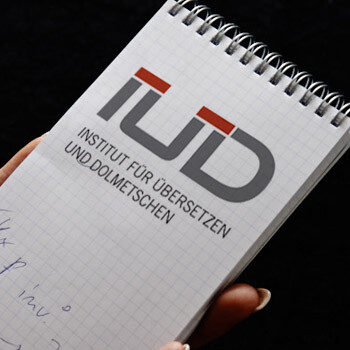Consecutive interpreting & note-taking technique
Consecutive Interpretation
In consecutive interpreting, longer sections of speech are interpreted with a time delay, usually using notes (with a special notation technique). The number of consecutive interpreters required depends on the level of difficulty and the duration of the assignment. Due to the subsequent interpreting, approximately twice as much time is required as for simultaneous interpreting. Areas of application: Table and welcome speeches, bilateral negotiations, ceremonial occasions (speeches), lectures, guided tours, etc.
Liaison interpreting and liaison interpreting as special forms of consecutive interpreting
Liaison interpreting or liaison interpreting: In this special form of consecutive interpreting, shorter passages of text are translated into another language with a time delay and section by section. Areas of application: Negotiations at the “round table”, technical discussions (e.g. machine launches), table discussions, etc. * With the kind permission of VKD im BDÜ e.V.
Note-taking technique of the consecutive interpreter
The note-taking technique is a special notation technique for consecutive interpreters used in consecutive interpreting that enables interpreters to record the text presented in a coherent and at the same time extremely condensed form. Unlike shorthand, for example, units of meaning are recorded instead of syllables. Even though a standard note-taking technique is taught at universities, this develops into a personal note-taking technique over the course of the consecutive interpreter’s career.








